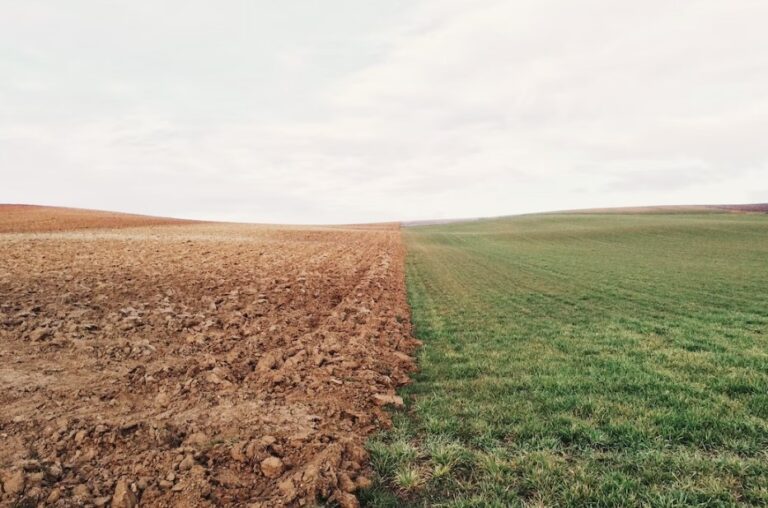Soil degradation emerges as a formidable environmental predicament, casting a shadow over the productivity and sustainability of Earth’s ecosystems. The deterioration in soil quality and vitality has resulted in a depletion of its capacity to nourish plant life and furnish vital ecological services.
Global Agriculture’s data presentation reveals distressing estimates, indicating that approximately 23% of utilized land suffers from some degree of degradation, warranting serious concern.
Furthermore, the Food and Agriculture Organization (FAO) sounds the alarm that 33% of the planet’s soils have already succumbed to degradation, with a disconcerting projection that over 90% could follow suit by the year 2050. Our endeavor shall delve into the intricacies of this issue and explore potential remedies to confront this urgent challenge.
Table of Contents
What is soil degradation
Soil degradation encompasses the deterioration of soil quality stemming from inappropriate utilization or inadequate stewardship, commonly associated with agricultural, industrial, or urban undertakings. This grave environmental quandary bears the potential for catastrophic repercussions on the ecosystem, manifesting in phenomena such as landslides and floods.
It is an ongoing process wherein the inherent functions and characteristics of soil are detrimentally impacted, often attributable to human actions and environmental influences.
The preservation of healthy soil stands as a fundamental imperative for agricultural productivity, biodiversity preservation, water filtration, and carbon sequestration. Alas, diverse human endeavors across the globe have engendered the widespread degradation of soil.
To effectively tackle this predicament, a comprehensive comprehension of its causes and ramifications is imperative, serving as a bedrock for implementing viable and efficacious solutions.
Causes of soil degradation
The following are the main causes of soil degradation:
1. Erosion
One of the primary contributors to soil degradation is erosion, predominantly driven by the forces of water and wind. Unsustainable agricultural practices, including improper tillage, inadequate crop rotation, and overgrazing, leave the soil exposed and susceptible to erosion. The presence of steep slopes and heavy rainfall exacerbates the issue, culminating in the loss of valuable topsoil fertility.
2. Deforestation
The clearance of forests for purposes such as agriculture, urbanization, and logging disrupts the delicate equilibrium within ecosystems. Trees serve as vital guardians against soil erosion, firmly anchoring the soil with their intricate root systems while providing essential shade. Deforestation augments the risks associated with erosion, nutrient depletion, and the loss of biodiversity.
3. Overgrazing
Unrestrained livestock grazing without appropriate management practices can precipitate soil degradation. Excessive grazing hampers the regeneration of vegetation, resulting in soil compaction, diminished water infiltration, and heightened erosion. Additionally, it disrupts the composition of plant species, exerting a profound impact on the overall ecosystem.
4. Urbanization
The expansion of urban areas leads to the destruction of fertile soil and the displacement of natural habitats. Construction activities, road development, and the proliferation of impermeable surfaces impede water infiltration, subsequently amplifying runoff and erosion. Urban regions also generate substantial amounts of waste, which, if mismanaged, can further exacerbate soil degradation.
Impacts of soil degradation
Soil degradation casts a vast influence, resonating with the environment and human well-being on multiple fronts. Let us delve into some of the paramount ramifications:
1. Diminishing soil fertility
The decline in soil fertility is an inevitable outcome of degradation triggered by the depletion of indispensable nutrients. This waning fertility unleashes a series of challenges, including diminished crop yields and agricultural productivity, thereby posing a menacing threat to the sustenance of food security and livelihoods. Moreover, it engenders the compulsion to resort to chemical fertilizers, exacerbating the adverse impact on the environment.
2. Escalating pollution
The contamination of soil, stemming from industrial activities and inadequate waste management, serves as a catalyst for pollution. Perilous substances insidiously permeate the food chain, imparting deleterious effects on human health and the integrity of ecosystems.
In addition, soil pollution profoundly affects the quality of water as pollutants permeate groundwater reservoirs and surface water bodies.
3. Extreme inundation
Deteriorated soil has diminished its water-holding capacity, amplifying the peril of inundation. Vigorous soil functions akin to a sponge, assimilating and stockpiling water, but degraded soil compresses and becomes inept at absorbing surplus rainfall. This can engender catastrophic deluges, inflict harm upon properties, and result in loss of lives.
Solutions to soil degradation
Mitigating soil deterioration necessitates a combination of sustainable methodologies and effective policies. Here are some remedies that can aid in the restoration and safeguarding of our soils:
1. Adopting responsible farming techniques
Embracing sustainable agricultural practices such as crop rotation, contour plowing, and agroforestry can curtail soil erosion, augment soil vitality, and conserve fertility. Employing precision farming methodologies, including the utilization of cover crops and reduced tillage, foster water and nutrient retention, thereby diminishing the dependence on chemical inputs.
2. Active reforestation
Encouraging afforestation and reforestation endeavors helps forestall soil erosion while yielding additional advantages like carbon sequestration and habitat reestablishment. Planting trees and vegetation along riverbanks, hillsides, and degraded zones stabilizes the soil, diminishes runoff, and heightens overall ecosystem well-being.
3. Mitigating
Salinization In regions plagued by salinization, implementing irrigation practices that prevent salt accumulation in the soil assumes paramount importance. Efficient water management approaches such as drip irrigation and precision watering can curtail waterlogging and salt buildup, thereby preserving soil quality.
4. Enacting sustainable development
In urban areas, adopting sustainable development practices can alleviate soil degradation. Strategies such as green infrastructure, rain gardens, and permeable pavements facilitate water infiltration into the soil, mitigating runoff and erosion. Proper waste management and recycling programs also thwart soil pollution.
Case studies of successful soil conservation projects
Gaining knowledge from prosperous soil conservation projects can inspire and steer forthcoming endeavors. Here are a few noteworthy case studies:
European Soil Data Center’s exemplary cases
The European Soil Data Centre has conducted an array of case studies focused on soil degradation and conservation practices throughout Europe. These studies furnish valuable insights into the efficacy of diverse approaches, emphasizing the significance of collaboration and knowledge exchange.
Soil erosion case study: Meadowview Open Space by Ecology Artisans
In collaboration with local authorities, Ecology Artisans undertook a soil erosion control project at Meadowview Open Space. Employing techniques such as contour grading, erosion control blankets, and the plantation of native vegetation, they stabilized the soil and prevented erosion, thereby restoring the degraded area.
Soil health case studies by the American Farmland Trust (AFT)
The American Farmland Trust has conducted multiple case studies highlighting soil health, showcasing the benefits of regenerative farming practices. These studies exemplify how practices like cover cropping, crop rotation, and the application of organic amendments can enhance soil health, amplify productivity, and fortify the resilience of agricultural systems.
Read more: ‘Zero Harvest’ and desertification: the impacts on food, emissions and water












